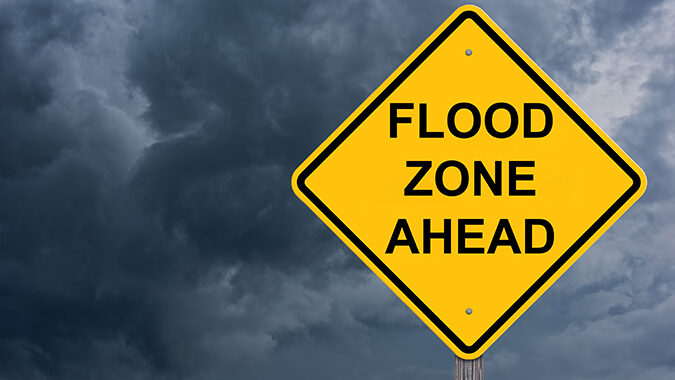New Jersey’s new updated inland flood protection plan that will take effect later this summer includes a key provision sought by NJBIA that protects development projects that already have local approvals if revisions to state flood maps place them in new or expanded flood zones.
Gov. Phil Murphy announced the upcoming adoption of the Inland Flood Protection Rule on Tuesday evening. The rule will be officially published in the New Jersey Register in July.
As originally proposed by the Department of Environmental Protection in 2022, projects that already had approvals, but had not begun construction, would have had to start the expensive permit approval process all over again and meet new flood protection standards if revisions to state maps put their projects in flood zones. Now the rule filed with the Administrative Office of Law pending official adoption grandfathers these projects.
“We are pleased to see the DEP listened to the concerns of the business and development communities regarding the unfair application of new standards to projects that were previously outside the flood hazard area,” NJBIA Deputy Chief Government Affairs Officer Ray Cantor said.
“The changes that were made on adoption will allow numerous projects that have been designed, obtained financing, and received local approvals to now move forward, bringing affordable housing and economic benefits to the state,” Cantor said.
“We thank the DEP and the Murphy administration for working in the spirit of compromise with this important provision,” Cantor said.
The DEP said the new inland flood rule would replace outdated precipitation estimates with modern data that account for observed and projected increases in rainfall. These changes will help reduce flooding from stormwater runoff and increase the resiliency of new developments located in flood-prone inland areas.
“The Inland Flood Protection Rule ensures that inland, riverine areas at significant risk are better defined and that new and reconstructed assets in these areas are designed and constructed to protect New Jersey’s assets, economy and, above all, our people from the catastrophic effects of worsening floods,” said NJDEP Commissioner Shawn M. LaTourette.
DEP sad the Inland Flood Protection Rule establishes design elevations that are reflective of New Jersey’s changing climate and more frequent and intense rainfall, replacing standards based on outdated data and past conditions. The updated standards will apply to certain new and substantially reconstructed developments in inland riverine areas that are subject to flooding, but they do not prohibit development in these flood hazard areas. Under the two primary components of the rule:
- The elevation of habitable first floors will be 2 feet higher than currently indicated on DEP state flood maps and 3 feet higher than indicated on FEMA maps.
- Applicants for certain permits will use DEP’s New Jersey-specific precipitation data when calculating peak flow rates of streams and rivers for permits under the Flood Hazard Area Control Act Rules, as well as when proposed development triggers compliance with DEP’s Stormwater Management rules.
The updated standards in the Inland Flood Protection Rule will apply to new or reconstructed developments, not to existing developments. Pending development applications before DEP that are administratively complete at the time of the rule adoption are not affected by these changes. Existing provisions of flood hazard and stormwater rules that provide flexibility from strict compliance based on unique site-specific conditions will remain in place, along with new provisions designed to ensure infrastructure projects now in progress can move forward.




